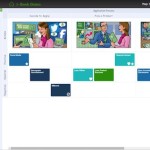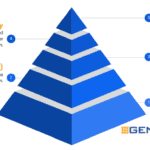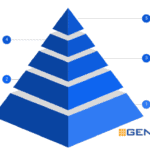Customer Journey Mapping is an important business tool that helps companies better understand the steps their customers take to complete a task, as well as the emotions and thoughts they experience along the way. By mapping out this journey, businesses can identify any customer pain points in the customer experience and work to find solutions.
In this post I provide a step by step process for process running a sucessful customer journey mapping workshop.

Planning A Customer Journey Mapping Workshop
Setting the Workshop Goals
One secret of a successful workshop is to be crystal clear on what the workshop is setting out to achieve. If you are muddy in the goal of the workshop you are likely to get a muddy result.
Here are the elements to need to confirm before the workshop.
Decide Which Persona(s) To Map
Customer journey maps are tied to customer personas. In planning for the workshop you need to clearly identify the customer persona or personas that will be the subject of the mapping process.
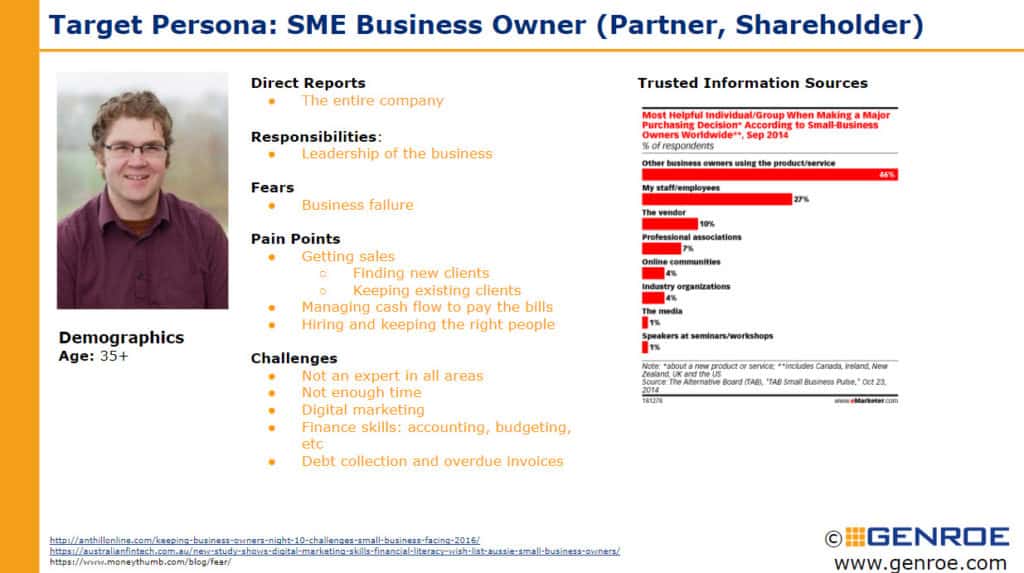
Decide The Type of Journey Map You Want to Create
There are three main types of customer journey maps:
- Customer Journey Maps: seek to document the entire customer journey: from awareness to sales, delivery and service.
- User Journey Maps: focus on understanding how users interact with software in order to understand what users find intuitive and easy and what they do not
- Buyer Journey Maps: help the sales and marketing team to map the customer’s path before they are a customer
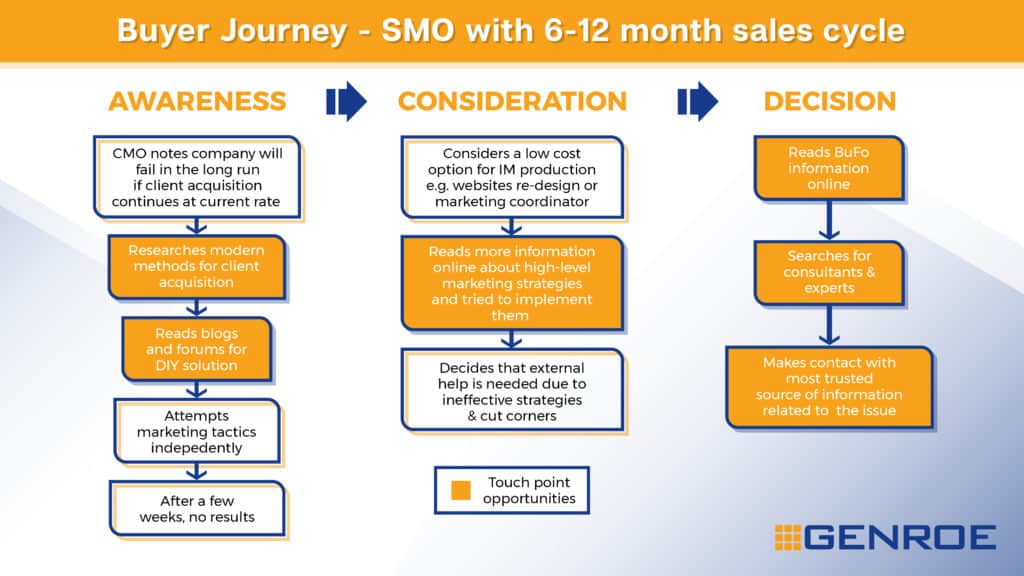
In planning the workshop you need to decide, and be very clear, as to what type of map the participants will be building.
You should also be clear on the end-points of the map. For instance a Buyer Journey amp will stop at the sale and you should provide a very clear stopping point as related to your business processes, e.g. “when the customer sends us the order”
As-Is Vs Should-Be Maps
Lastly, you need to be clear if you’re seeking to map the customer journey as it currently is (As-Is map) or as you would like it to be (Should-Be map).
Normally you need to map the As-Is journey before looking to determine how to improve it with a Should-Be journey. So, if this is your first map you should be considering the As-Is journey.
Select the Journey Mapping Workshop Attendees
There are no hard and fast rules for selecting the invitees for the workshop but here a few guidelines:
Include Cross Functional Representatives
Ensure the workshop attendees are from across the business so you include as many different perspectives in the customer journey as possible. This means that you’re getting the most accurate information and buy-in from different groups.
In practice, this normally means including people from both different locations and business areas (sales, accounts, marketing).
If you miss a representative for an area or areas you run the risk of creating an inaccurate map.
Number of Attendees
As with any workshop there is a sweet spot for attendee numbers.
\Too few and you will not have people with the required knowledge.
Too many and the workshop becomes unwieldy to manage, with bold personalities driving the conversation and others stepping back.
5-8 people is the sweet spot for most workshops.
Seniority of Attendees
Attendees for the workshop should be intimately involved with the actual processes in the organisation, as opposed to what might be written in corporate policies or documents.
This often excludes managers and senior managers as they can be disconnected from day to day operations.
It also has the benefit of ensuring that the presence of senior managers doesn’t stifle discussion and debate in the workshop
External or Internal Facilitator?
Every good workshop will have a single person responsible for the process of running the workshop: the Facilitator.
The Facilitator does not need to be an expert in the business, rather, best practice is for the Facilitator to not be a subject matter expert in the customer journey being mapped.
This allows them to stand apart from the detail and focus on the process itself. It also means they can ask “innocent” questions about the business and not feel like they should already know the answers.
If you use an external journey mapping workshop facilitator, they will be experienced not just in workshop facilitation but also the journey mapping process. This can help the workshop run more smoothly and increase the chances of success.
Thus the Facilitator can be an internal person (from the company) or external expert.
Attendee Pre-Work
If you choose the right attendees they will need little preparation as they will have a deep understanding of how the business operates and be able to recall each element of the customer journey in the workshop.
However, ask them to bring along any documents or existing customer research they already have if they feel they might be useful in the workshop.
Workshop Duration
When we run these types of workshops we typically look to book four hour sessions with a 15min break in the middle.
We also typically only book one workshop per day. This reduces distractions by ensuring people can complete their day to day work in the other half of the day
How to Run the Journey Map Workshop
The planning is done and the day of the workshop is here. Here is how you should run the journey mapping workshop itself.
Start with a Senior Management Introduction
If you can, have a senior manager introduce the workshop and outline the importance of the journey map and process. This gives context to the workshop and demonstrates the value of the process to the attendees.
Facilitator Introduction and Workshop Goals
The Facilitator should then share with those assembled the goals of the workshop.
Share the material you have created in the planning process, especially the goals and personas, and the process for the rest of the workshop.
Create the Customer Journey Map
Let everyone know the end point, what an example map looks like, and how the map will actually be created.
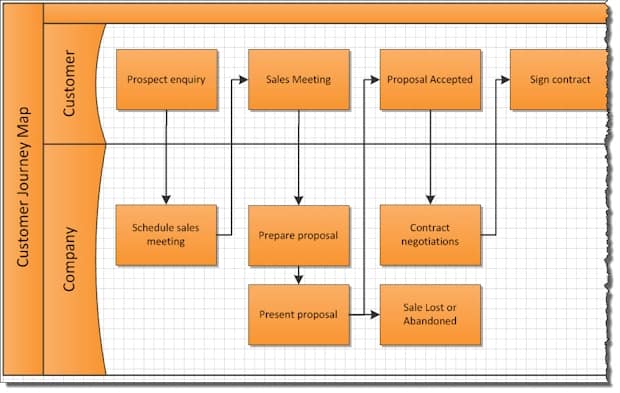
There are two main ways this can be done.
Create a Physical Customer Journey Map
If you can get everyone in the same room, old school sticky notes and butcher’s paper is often the best way to capture the journey.
Use pads of sticky notes (large size [3”x 5”] if possible), one for each attendees
Ask each attendee to, by themselves, write down each of the touchpoints that exist in the customer journey with the following instructions.
- One Touchpoint per note it
- Clear, easy to read handwriting
- No more than 5 words.
While they are writing down the touchpoints, tape several sheets of flip chart paper up to the wall in the line. Then draw a line horizontally in the middle of the sheets. Write “Customer” on the top half and “Company” on the bottom half. Then “Start” on the top left and “End” on the top.
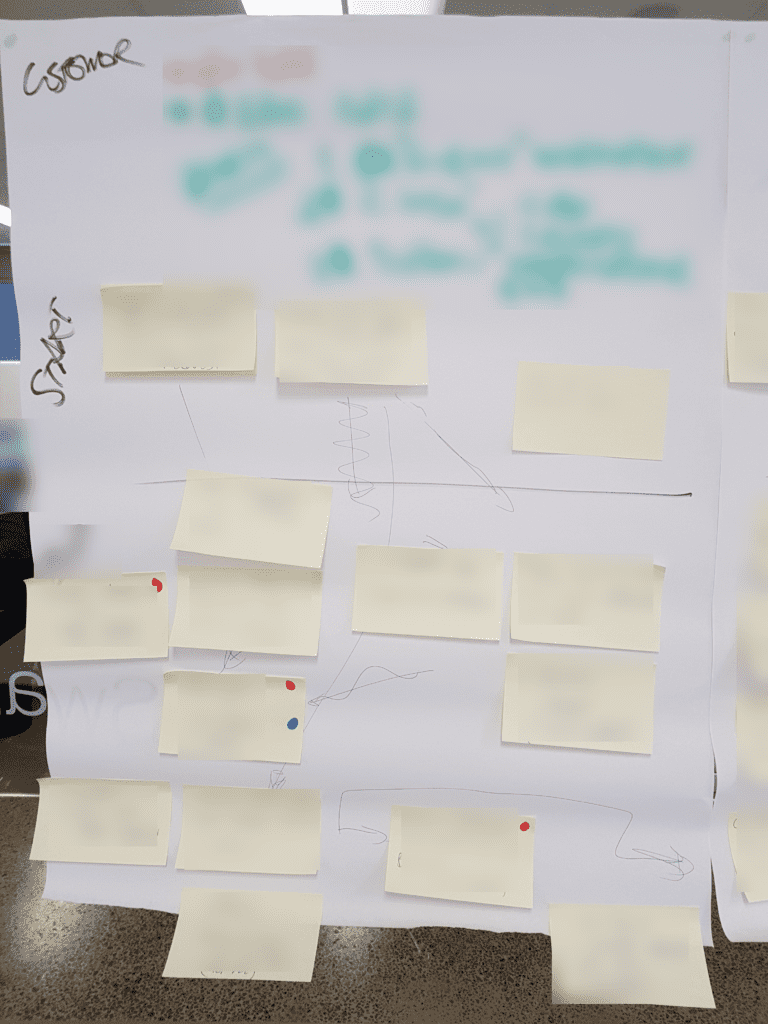
In this context the Customer section is where touchpoints initiated by the customer are placed (e.g. inbound service request) and Company is where touchpoints initiated by the Company are placed (e.g. send welcome pack)
When attendees finish writing down their touchpoints, have them start to place them on the touchpoint map where they think they should go. Encourage people to move the touchpoints around to get the order correct. Also have them throw away any duplicate touchpoint notes which are bound to have been created in the process.
When everyone has placed their touchpoints on the map, start at the top left of the map (the first contact) and interactively work through the entire map to create an accurate view of the customer journey.
Typically this works best if the facilitator stands at the map and simply asks “after this Touchpoint what happens”.
New post-it notes will have to be made as some touchpoints will have been forgotten and there will often be disagreements between attendees on exactly what happens. However, when consensus is reached a valid customer journey map will have been created.
Create the Map Digitally
There are also a variety of customer journey mapping software tools that you can use to document your customer journey map.

If people are not able to be in the same room you can run a virtual workshop very effectively with these tools.
The process is essentially the same as the physical approach. Some tools, e.g. Miro, are able to give all participants access to the shared space and they can dynamically add their virtual sticky notes to the page.
Beware though, the Facilitator must be quite adept at using the software otherwise the process can quickly get bogged down and confused.
What to do After the Journey Mapping Workshop
Of course, the journey mapping workshop is not an end in itself, only a means to an end. After the workshop completes here’s what you need to do.
Document and Share the Map
As for all workshops, you need to share the findings and outputs of the workshop. As the journey map is a working document it’s even more important that it be shared with the rest of the organisation.
If you used the paper and post-it notes approach you will need to document the outputs in some type of journey mapping software so it can be easily updated and shared inside the organisation.
You should then send or share the files with, as a minimum, the attendees but also with other interested parts of the business.
Validate the Journey Map
In the mapping workshop you may have been forced to make assumptions about different areas of the map. This may happen because you don’t have all the information at hand or need to perform do some research about an area that came up in the workshop.
Make sure that you complete that extra work to validate the map. If the map is invalid so will the analysis and actions that you plan based on it.
Analyse the map and take action
Of course, all of the work so far is for nothing if you don’t using the map to identify opportunities for improvement in the business.


